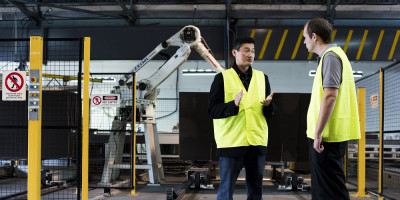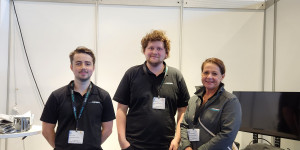Digital Lean helped meat industry powerhouse Silver Fern Farms tap into machine learning and data analytics to more accurately forecast offal yields, with the results far more wide-ranging than just more efficient meat processing.
At a glance
- Although major players in New Zealand’s meat industry, Silver Fern Farms knew their offal yield forecasting wasn’t as accurate as it could be, was time-consuming and eating into profits.
- Utilising the Digital Lean programme from Callaghan Innovation, they implemented data-driven solutions to automate yield forecasting, helping staff gain more actionable insights.
- Not only affecting the bottom line, the new modelling helps free up staff time and is able to be replicated in other areas of the business to drive further improvements also.
Callaghan Innovation’s assistance through Digital Lean has also opened our eyes to the potential of Industry 4.0. Bringing in industry expertise will really change what we do.
- Dylan Marsh, Continuous Improvement Manager, Silver Fern Farms
Poor forecasting cutting into profits
It may be less glamorous but it’s an important part of Silver Fern Farm’s business, that’s why they decided to put the focus on offal (organs and less common meats), specifically offal yield forecasting.
“Take an animal that weighs 250 kilograms, for example. How can you tell how much liver, heart and tongue it will yield?” asks Dylan Marsh, Continuous Improvement Manager at Silver Fern Farms.
As a major player in New Zealand’s meat product industry, Silver Fern Farms produces 30 per cent of all New Zealand’s lamb, beef and venison and exports to over 60 countries, generating more than $2.4 billion in annual sales.
But when it came to offal yields the business would mainly forecast on an annual basis, setting targets accordingly. It wasn’t taking into account monthly or daily offal yield changes, nor was its forecasting sensitive enough to other factors like how much meat came into its plants, climatic conditions leading to drought or disease.
“We’d ask ourselves, why aren’t we reaching our production targets? Our excuse was that the targets weren’t accurate,” says Marsh.
Silver Fern Farms implemented new data-driven solutions for the forecasting of offal yield, helping their staff to draw more actionable conclusions from the data and setting the business up to make huge export gains.
Leaning into digital and data with Callaghan Innovation

With the help of Callaghan Innovation’s Digital Lean programme, Silver Fern Farms for the first time has been able to consolidate data silos and achieve more accurate yield predictions. This has been achieved by applying data analytics and machine learning, whilst also drawing on more data sets, including climate, farm and animal specific information.
All the new data and analytics is displayed via visual dashboards in the processing rooms, showing information staff can relate to such as dollars or kilograms per head of livestock. It helps give staff real insight into more dynamic yield forecasts, offering a greater sense of accountability and motivation.
“Our reporting used to just be a spreadsheet full of figures. The average person’s eyes would glaze over; the data was meaningless,” says Marsh.
A model for success

By harnessing the Digital Lean programme, Silver Fern Farms’ more accurate forecasting is expected to really affect their bottom line.
Thick skirt steak for example, a lower-value cut of meat grouped in with offal, saw a 5 per cent increase. Maintaining this higher yield over one year would equate to a profit increase of $33,000. And, if the same improved yield was applied to all offal product categories, that would equate to a $500,000 per year profit increase, and that’s just from the Hawera plant where the initial pilot was held.
Silver Fern Farms also expects the new system to save staff, such as business analysts and plant managers, up to 90 minutes a week. This lets them focus on other value-add tasks and produce more actionable insights.
“Through Digital Lean it became clear that staff were spending time on tasks that a bot could do, and that automating these tasks would mean staff could spend more time on more valuable and rewarding work. Automating these data-entry tasks alone will cover the cost of the project.”
Marsh believes the new data modelling will also have major benefits for the wider business, such as an increased awareness of performance in real-time, enabling staff to make changes, and increased confidence in how individual plants are tracking against production targets.
“Callaghan Innovation’s assistance through Digital Lean has also opened our eyes to the potential of Industry 4.0,” says Marsh, adding there’s still plenty to learn. “Bringing in industry expertise will really change what we do.”























